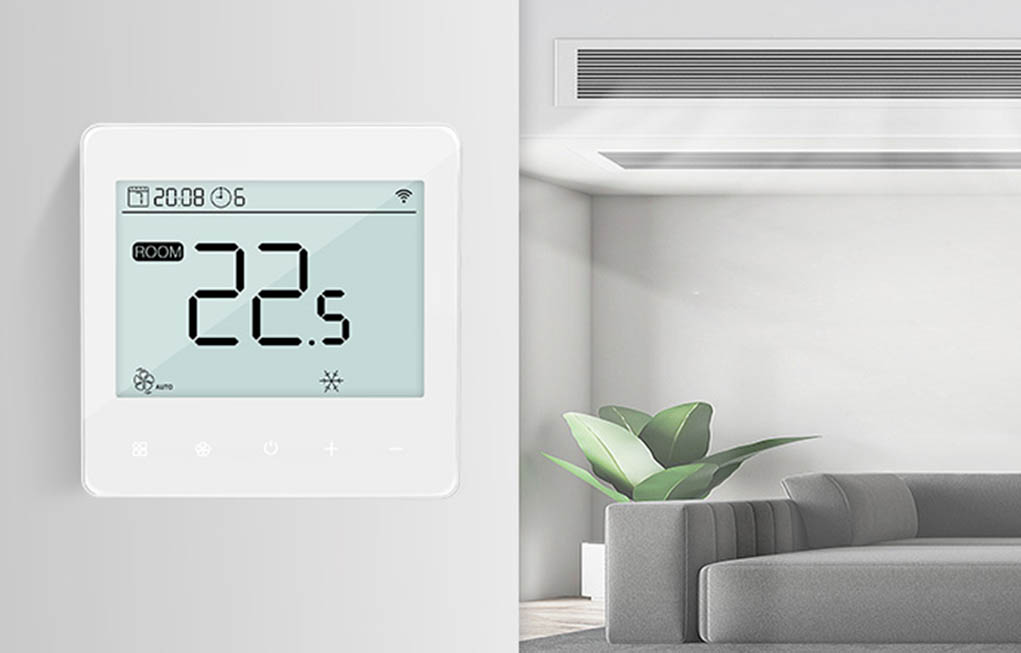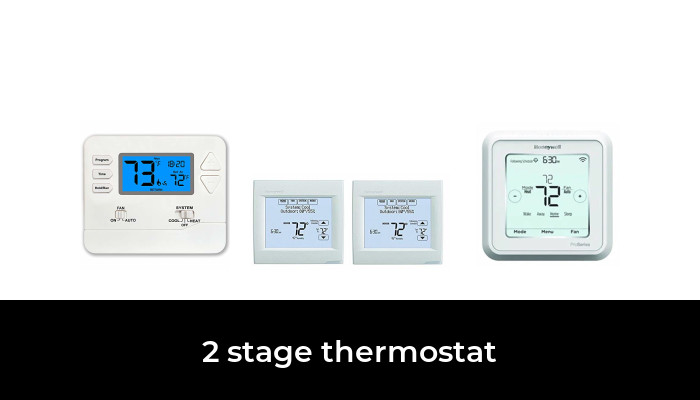What Is A Two Stage Thermostat

Frequently Asked Questions About Two-Stage Thermostats
If you're considering upgrading your home's heating and cooling system, you've probably heard about two-stage thermostats. But what are they, and how do they differ from single-stage models? This FAQ provides clear and concise answers to common questions about two-stage thermostats, helping you make an informed decision for your comfort and energy efficiency.
What is a two-stage thermostat and how does it work?
A two-stage thermostat controls a two-stage heating or cooling system. Unlike single-stage systems that operate at only one output level (either full-blast or off), a two-stage system has two output levels: a low stage for mild weather and a high stage for extreme temperatures. The thermostat communicates with the HVAC system, telling it which stage to operate in.
Here’s a simplified breakdown:
- Low Stage (First Stage): Operates at a lower capacity, providing gentle and consistent heating or cooling. This is ideal for maintaining a comfortable temperature on moderately warm or cool days. It's more energy-efficient and runs for longer periods.
- High Stage (Second Stage): Kicks in when the thermostat senses a significant difference between the set temperature and the actual room temperature. This stage delivers maximum heating or cooling power to quickly reach the desired temperature.
The two-stage thermostat monitors the indoor temperature. If the temperature is only slightly different from the setpoint, it activates the first stage (low). If the temperature difference is significant, it activates the second stage (high) to quickly bring the temperature back to the desired level.
Why should I consider a two-stage thermostat and HVAC system? What are the benefits?
Investing in a two-stage system with a compatible thermostat offers several significant advantages over a single-stage setup:
- Improved Comfort: Two-stage systems provide more consistent temperatures and eliminate the temperature swings often associated with single-stage systems that cycle on and off frequently. This is because the first stage can maintain the temperature more effectively during moderate weather.
- Enhanced Energy Efficiency: Running at the lower stage uses less energy compared to constantly running at full capacity. The system only uses the high stage when absolutely necessary, reducing energy consumption and lowering utility bills.
- Quieter Operation: The low stage operates at a lower fan speed and compressor level, resulting in quieter operation compared to the full-blast operation of a single-stage system.
- Better Humidity Control: When running in the low stage for extended periods, the system removes more humidity from the air, leading to a more comfortable indoor environment, especially during humid summers. This helps prevent mold growth and improve air quality.
- Longer System Lifespan: Reducing the frequency of on/off cycles reduces stress on the system components, potentially extending the lifespan of your HVAC equipment.
- More Consistent Airflow: The constant airflow provided by the low stage filters air more effectively, reducing allergens and improving indoor air quality.
Think of it like driving a car. You wouldn't drive everywhere at full speed. A two-stage system is like having a car that can cruise efficiently on the highway and accelerate quickly when needed.
How do I know if my current HVAC system is two-stage compatible?
Determining if your existing HVAC system is compatible with a two-stage thermostat requires a little investigation. Here's how you can find out:
- Check Your Equipment's Model Number: Locate the model number of your furnace, air conditioner, or heat pump. You'll typically find it on a sticker or plate on the unit itself. Search the model number online or consult the manufacturer's specifications to see if it's a two-stage system. Look for keywords like "two-stage," "variable capacity," or "modulating."
- Inspect Your Furnace Gas Valve: If you have a gas furnace, a visual inspection of the gas valve can often reveal whether it’s a single or two-stage unit. A two-stage gas valve will have two separate gas inlets and controls, allowing it to operate at two different flame heights.
- Consult Your HVAC Technician: The easiest and most reliable method is to contact a qualified HVAC technician. They can quickly assess your system and determine if it's two-stage compatible. They can also advise you on the best thermostat options for your specific setup.
- Review Existing Thermostat Wiring: If you're comfortable working with electrical wiring (always turn off the power first!), carefully examine the wiring connections at your existing thermostat. A two-stage system typically requires more wires than a single-stage system. Look for wires connected to terminals labeled "W1" and "W2" (for heating) or "Y1" and "Y2" (for cooling). The presence of these wires *suggests* a two-stage system but isn't a definitive confirmation.
Important Note: Simply installing a two-stage thermostat on a single-stage system won't magically transform it into a two-stage system. The HVAC equipment itself *must* be designed for two-stage operation.
Can I install a two-stage thermostat myself, or should I hire a professional?
While some homeowners with experience in electrical wiring may be comfortable installing a thermostat themselves, it's strongly recommended to hire a qualified HVAC technician, especially when dealing with a two-stage system.
Here's why:
- Correct Wiring is Crucial: Two-stage systems require more complex wiring configurations than single-stage systems. Incorrect wiring can damage the thermostat, the HVAC equipment, or both.
- Proper Configuration: Two-stage thermostats often require specific configuration settings to match the type of HVAC system they're controlling. A professional will know how to properly configure the thermostat for optimal performance.
- System Compatibility: As mentioned earlier, it's essential to ensure that your HVAC system is actually compatible with a two-stage thermostat. A technician can verify this and recommend the best thermostat model for your needs.
- Warranty Considerations: Improper installation can void the warranty on your thermostat or HVAC equipment.
- Safety: Working with electrical wiring can be dangerous. A professional will have the necessary tools and expertise to ensure a safe and proper installation.
While DIY installation may seem like a way to save money, the potential risks and complications outweigh the benefits. Hiring a professional ensures a safe, correct, and efficient installation, protecting your investment and ensuring optimal performance of your HVAC system.
What are the key features to look for in a two-stage thermostat?
When shopping for a two-stage thermostat, consider these essential features:
- Programmability: Look for a thermostat that allows you to create custom heating and cooling schedules for different days of the week. This can significantly reduce energy consumption by automatically adjusting the temperature when you're away or asleep.
- Wi-Fi Connectivity: Wi-Fi-enabled thermostats allow you to control your HVAC system remotely using a smartphone or tablet. This is particularly useful for adjusting the temperature before you arrive home or for monitoring energy usage.
- Smart Features: Some thermostats offer advanced features like learning capabilities (they learn your preferences and adjust the schedule automatically), geofencing (they adjust the temperature based on your location), and integration with other smart home devices.
- Display and User Interface: Choose a thermostat with a clear, easy-to-read display and a user-friendly interface. A backlit display is helpful in dimly lit areas.
- Compatibility: Ensure the thermostat is compatible with your specific HVAC system and voltage requirements.
- Energy Star Certification: Look for the Energy Star label, which indicates that the thermostat meets strict energy efficiency guidelines.
- Filter Change Reminders: Many thermostats have built-in reminders to change your air filter, helping you maintain optimal system performance and air quality.
Consider your individual needs and preferences when selecting a thermostat. Do you prioritize programmability, remote access, or advanced smart features? Research different models and read reviews to find the best fit for your home and lifestyle.
Are two-stage thermostats more expensive than single-stage thermostats?
Generally speaking, two-stage thermostats are more expensive than basic single-stage models. This is due to the more advanced technology and features required to control a two-stage HVAC system.
However, the higher upfront cost can be offset by the long-term energy savings and improved comfort provided by a two-stage system. Over time, the reduced energy consumption can help you recoup the initial investment.
Factors that influence the price of a two-stage thermostat include:
- Features: Thermostats with advanced features like Wi-Fi connectivity, smart learning capabilities, and color displays tend to be more expensive.
- Brand: Well-known and reputable brands often command a higher price.
- Installation: The cost of professional installation will add to the overall expense.
When comparing prices, consider the total cost of ownership, including the purchase price, installation fees, and potential energy savings. A slightly more expensive thermostat with better energy efficiency may be a better investment in the long run.
What is the typical lifespan of a two-stage thermostat?
The lifespan of a two-stage thermostat is generally comparable to that of a single-stage thermostat, typically ranging from 10 to 15 years. However, several factors can affect its longevity:
- Quality of the Thermostat: Higher-quality thermostats from reputable brands tend to last longer than cheaper, lower-quality models.
- Usage and Environment: Thermostats exposed to extreme temperatures, humidity, or dust may have a shorter lifespan.
- Maintenance: Regularly cleaning the thermostat and replacing batteries (if applicable) can help extend its lifespan.
- Electrical Surges: Electrical surges can damage electronic components, potentially shortening the lifespan of the thermostat. Consider using a surge protector.
While 10-15 years is a reasonable expectation, be aware of signs that your thermostat may be failing, such as:
- Inaccurate temperature readings
- Inconsistent heating or cooling
- Unresponsive buttons or display
- Erratic behavior
If you experience any of these issues, it may be time to replace your thermostat. Consulting with an HVAC technician can help you determine if a replacement is necessary and choose the right thermostat for your needs.










